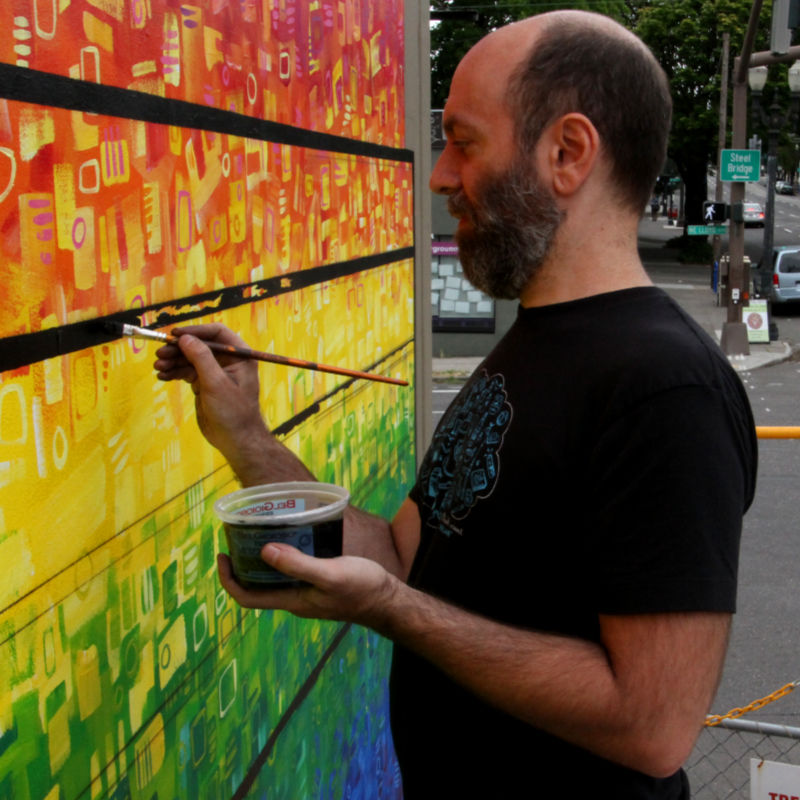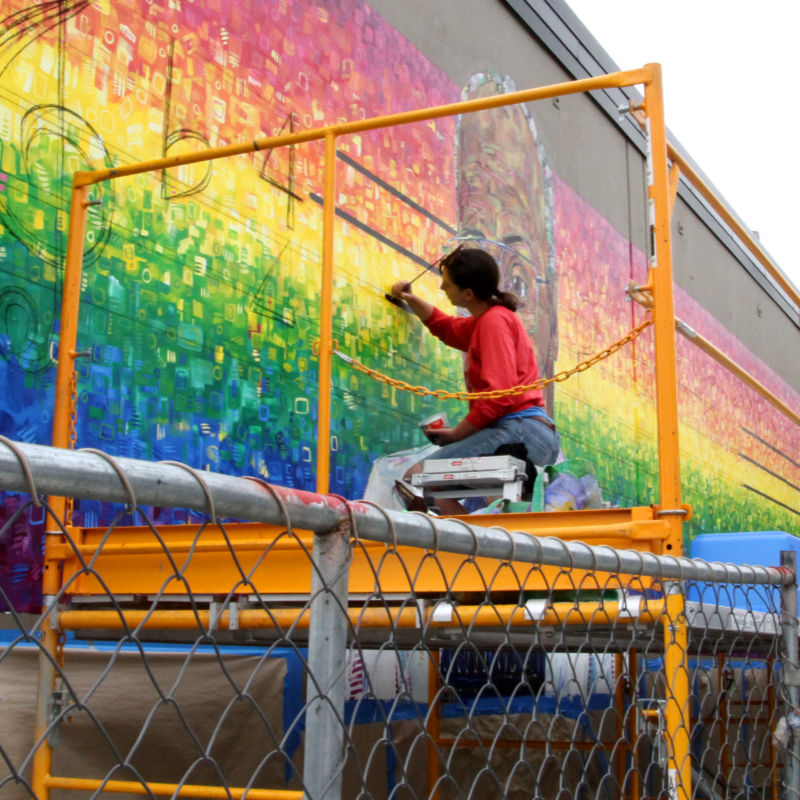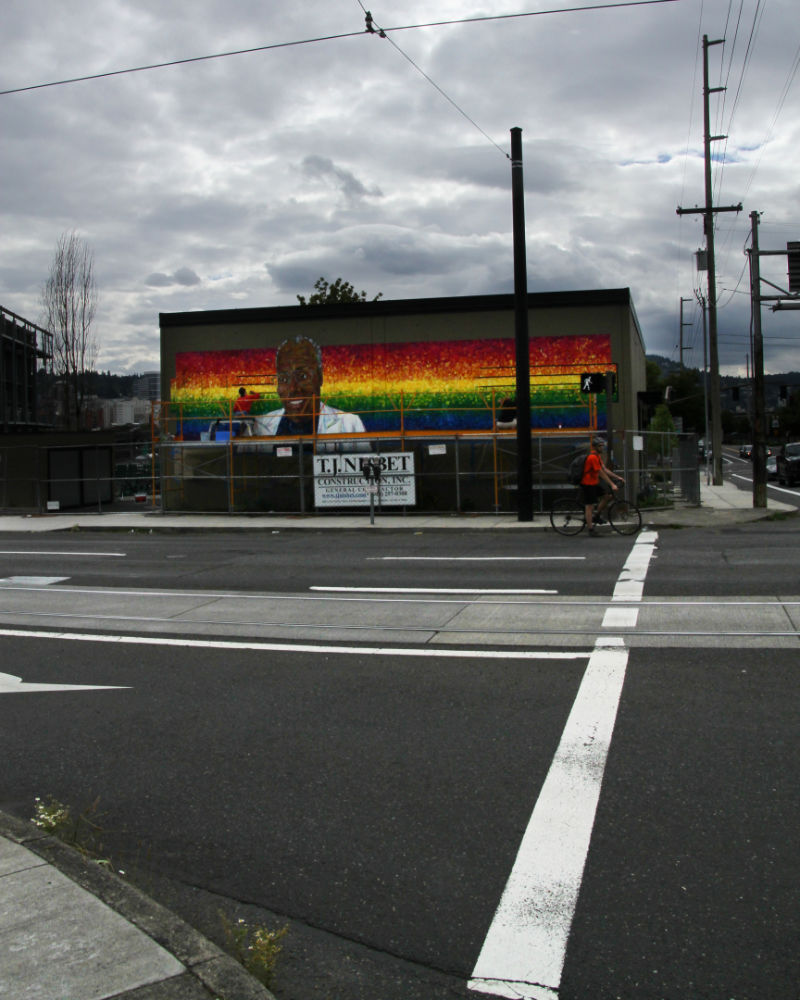Blog / 2014 / On Portraiture and Appropriation
July 25, 2014
As I’ve been working on my portrait mural of Kirk Reeves at 430 NE Lloyd over the last week or so, the question of appropriation has come up many times and in a variety of forms. I’ve been asked:
- Do you have permission to make this painting and from whom did you receive that permission?
- Why did the City of Portland choose you to do a mural of Kirk?
- Is it right for you as a white artist to create a black artist’s memorial?
And while all this inquiry is interesting, I’m not convinced it’s actually focused in the right place. After all, the act of making a portrait is always a touchy one, no matter the specifics of the situation. And when I say “portrait” I’m using that term to include the sort of work I do along with the work of all journalists as well as many photographers and filmmakers. Whenever you document a real person, place, thing, or event, you are, by definition, appropriating them.
APPROPRIATE - to take exclusive possession of; to set apart for or assign to a particular use; to take or make use of without authority or right.

Let’s break it down. A portrait may not be an exclusive possession in the sense that your rendering will be the only one ever made of a given subject, but it can be exclusive in the sense that your rendering will have a life of its own, separate from the subject and linked to you. Furthermore, a portrait sets the subject apart from everybody and everything else in that the portrait’s subject has been singled out to be portrayed. Finally, a portrait is always made without full authority because a subject can never wholly comprehend what they’re signing up for before they’ve seen the finished portrait—as anyone who's ever flinched at an unflattering snapshot of themselves knows.
So, since it’s not up for debate whether or not an artist or journalist is appropriating when they make a portrait, the question becomes: is the portraitist appropriating in a respectful manner or not?

A few years ago, I saw a portrait of a dead man that I found disrespectful. It was a large installation piece constructed using some of the man’s possessions after most of his stuff had been purged through an estate sale. The portraitists did not know the man they were portraying, and they used the deceased’s real name along with other identifying information in the artwork.
The whole thing seemed mean-spirited and rude to me, and it still upsets me when I think about it, but, to others, the work was brilliant or even completely unremarkable. In other words, “respectful” appears to be in the eye of the beholder.

To answer the specific questions I’ve been asked:
- Kirk gave me permission to paint his portrait in 2007, but he obviously did not pass on this newer portrait, and I only told his sisters about the mural once it was already confirmed that it would be happening. I asked no other Portlander how they would feel about me doing this painting, except those who sat on the City’s various mural committees.
- I was not chosen to paint Kirk: I chose to paint him. Also, the funding for the mural comes mostly from the private sector.
- It’s not ideal that a white artist is making the memorial for a black one, but this is not the first celebration of Kirk’s contribution to Portland and I hope it will not be the last.
The mural has received a lot of attention so far, but I am not vain enough to think that this attention has much to do with me. People are drawn to this piece first and foremost because they are interested in the subject of the portrait. And I understood that would be the case from the moment I conceived of the memorial, but I wasn’t after the attention that Kirk would bring me. I was looking to process my grief for Kirk’s passing as well as my grief for the status of artists in society, and I hoped I might help other Portlanders process their grief as well.
In making this mural, I am absolutely appropriating Kirk’s likeness and his story. I believe I am doing so respectfully, but I acknowledge that others might not think so.
Did this post make you think of something you want to share with me? I’d love to hear from you!
To receive an email every time I publish a new article or video, sign up for my special mailing list.

